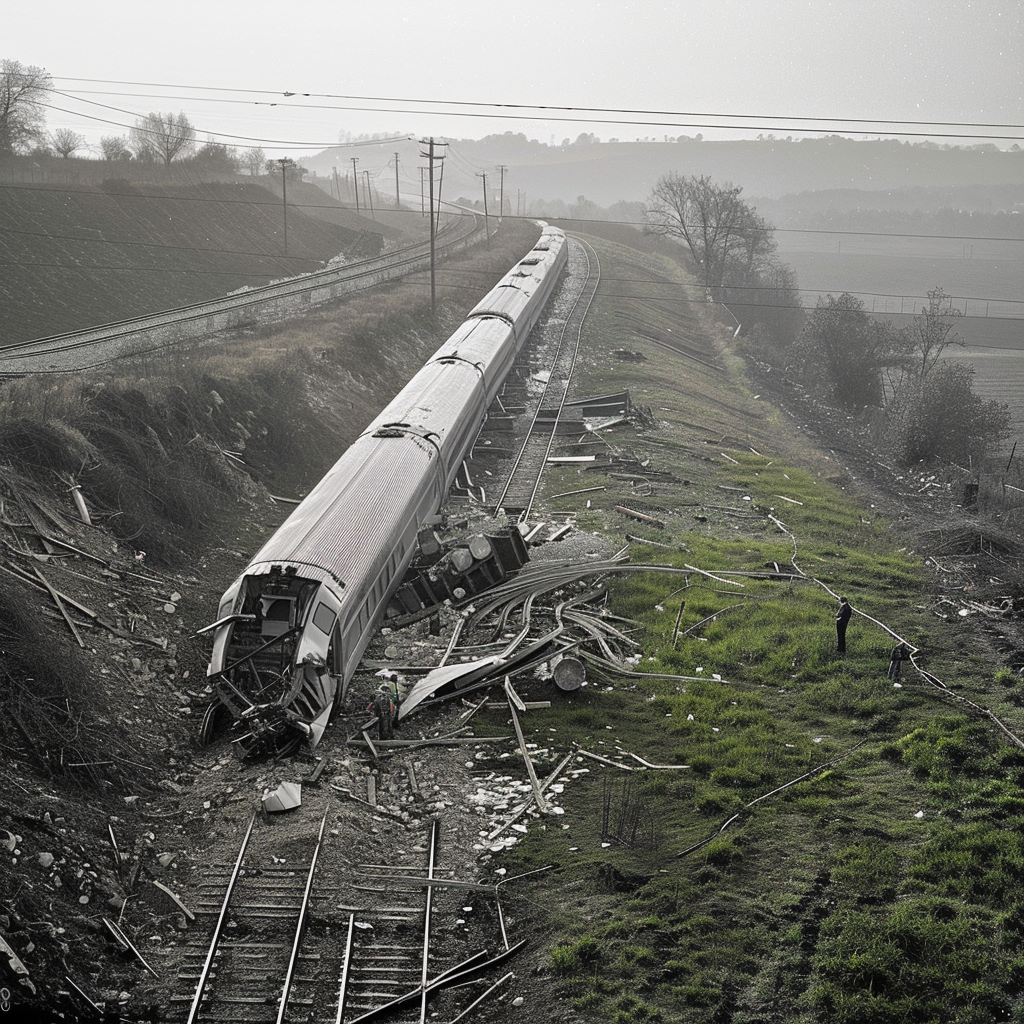Table of contents
Understanding Business Transformation Frameworks
New technology and rapidly changing market conditions are forcing organizations to change faster than ever. But internal conditions are making change even more challenging:
- The distribution of power within organizations has shifted. A recent Edelman report found that two-thirds of employees expect to have a voice in the future of their company. And when they don’t have it, they’re responding with employee movements and unionization. In the long term, the broader trend of declining birth rates means the labor pool is shrinking—a major shift that managers who “came of age in an era of abundant workers” will be forced to adapt to.
- Technology is forcing organizations to reconsider how and where jobs are performed. One-third of all work in the US happens at home, but in urban centers, it’s closer to 50%—arguably the biggest shift in the workforce since World War II. Meanwhile, developments in AI and automation are disrupting industries and forcing organizations to question what roles must be performed by people, what roles will be replaced, and the best ways for humans and machines to work together.
- Organizations are being asked to solve bigger problems. Organizations are also facing new expectations: consumers believe that businesses are the only institutions that are both competent and ethical enough to effect change, and increasingly expect them to take a stand regarding social and environmental issues.
Despite these massive systemic changes, people haven’t changed: they still resist the loss that inevitably accompanies change (even when change is ultimately for the best). As a result, change fatigue is an epidemic: 71% of employees feel overwhelmed by the amount of change happening in their jobs.
“Opting out” of future change simply isn’t an option—change will continue. But the frameworks organizations have historically relied upon to navigate change are no longer adequate. Organizations desperately need a new framework for navigating change that recognizes they’re experiencing radically new conditions.
Importance of Business Transformation Frameworks
It’s important to have a systematic approach to managing and executing complex transformation initiatives because:
- A transformation framework helps align business transformation efforts with the long-term vision and objectives of the organization, supporting its growth and competitiveness.
- A framework provides a structured approach for managing and executing the transformation process, which makes it repeatable and increases the organization’s capacity for ongoing change.
- A framework can also provide organizations with insights into what resources will be required to enact change—and for how long.
- A defined, shared transformation framework gives participants the confidence that change is progressing, facilitating effective communication and collaboration, and ensuring their buy-in and support throughout the transformation journey.
That said, the business transformation frameworks of the past (Kotter, Prosci, Switch, Bridges, and so) on each have their own value and strengths, but contain assumptions that don’t reflect the true nature of organizational and cultural change—and in fact, make change even harder to understand. That’s why over a span of ten years, and in partnership with some of the world’s most famous organizations, NOBL has tried dozens of novel combinations of change processes, with the goal of developing a transformation framework that would deliver immediate results and a lasting capacity for change. We’ve called this innovative approach Change Making.

Exploring the 2 Main Types of Business Transformation
Change Making is unique in that it recognizes there are actually two types of change which require different frameworks:
- Some changes, like reorgs, are difficult to reverse and, once made, have a wide and typically long-lasting impact on the organization. Fortunately, while the cost of failure may be high, the solution set is usually finite, even small. (For example, even though consultants “reinvent” the matrix org structure each year, there are really only a handful of ways to organize people in a company.) For these changes, it’s best to apply a traditional, waterfall-style change method.
- Other changes are easy to reverse, and in fact, benefit from iteration and adaptation. These are, surprisingly, most of the changes that organizations make: they’re the processes and tools that teams use on a day-to-day basis. These are best implemented with an agile-inspired change method.
Properly identifying which changes require which framework are critical to the success of a change initiative. Of course, enterprise-wide change programs (like a reorg or strategic pivot) involve both types of change, which requires a way to continually connect the dots between the two.
The 4 Steps Involved in Business Transformation
Whether an organization requires waterfall- or agile-based change, or a combination of both, the process begins the same way.
Step 1: Orient: Focus on Business Objectives
The first and most important step in any organizational change is to understand where the organization needs to go, and what resistance to change to expect. This typically involves some attempt to analyze the current state and performance of the organization, as well as an effort to evaluate alternatives and develop strategy to achieve the desired outcome.
Most organizations and consultancies get stuck here because they believe this requires an in-depth, drawn out assessment. But complex systems like organizations can’t be “mapped” onto paper or accurately described through interviews and surveys, nor can personality or leadership assessments determine how people will react to change.
Instead, lengthy discovery processes give the illusion of understanding, but can prove false once change is introduced, and may even stall change by prematurely declaring some leaders as “difficult” or “blockers.” An accurate assessment of the organization’s ability to change only comes when change is actually introduced: it reveals where power lies, what triggers resistance, and which divisions lean in, versus those that “wait and see.” Surveys can be deployed, but mostly to define a set of baseline metrics to compare against over time.
This phase, therefore, is best kept short and focused. We have two goals: first, to quickly define an initial transformation plan, including your desired outcomes, interventions and programs, potential barriers, and participants. Second, to build rapport and establish trust with your key players to build a durable political coalition for change.
Step 2: Scout: Discover by Doing
The real work begins in the Scout phase, the purpose of which is to implement changes and quickly learn from the responses they elicit. Quick wins prove change is possible, generating early momentum for the long haul, while uncovering deeper insights about the organization and its capacity to change.
Whenever possible, organizations should begin a transformation with the changes that require an agile-inspired approach. We set up cross-functional teams, or “Squads,” to prioritize, test, and improve upon the initial set of ideas suggested in the Orient step. These tests—or “skateboards”—should be social or behavioral experiments that don’t require system changes, policy approvals, comprehensive data collection, mandates, or other intensive activities outside the squad’s control. Behavioral interventions are the ones that, if they make people’s work better and easier, are easiest to spread organically in an organization.
As tests start to deliver real results—teams start holding better meetings, for instance, or achieve more of their production goals—those success stories are shared with the rest of the organization. This rapidly scales change as other team members want to improve their own working conditions, and share in the spotlight.
This approach often minimize or even eliminate the need for bigger changes like a reorg—teams now work so effectively that there’s no need for radical interventions.
Step 3: Scale: Implement and Monitor Progress
Once initial trials have begun to demonstrate value and traction, they must be scaled to the rest of the organization. This could look like spreading successful new ways of working to other teams and helping them adapt those practices to their specific projects or contexts.
This is also when we tackle the larger changes that require more of a waterfall-style approach. We typically start by drafting potential choices so that leaders have something to react to. In the case of a restructure, for instance, this might have an organizational structure for “region” vs. “product.” Then, the team redesigns and creates alternatives, and evaluates trade-offs.
Once the decision has been made, leaders develop a roadmap for both communication and implementation. This Change Plan may look somewhat traditional, with key elements like stakeholder maps, training plans, roadmaps, and required approvals.
Throughout both Scout and Scale phases, changes must be integrated so that the organization is headed toward its desired change outcomes. This is also the right time to think about creating a Center of Excellence (CoE) or Community of Practice (CoP), and implementing more frequent communication about how the changes are impacting the organization.
Step 4: Sustain: Exercise Effective Control and Ongoing Change in the Long Term
Fifth and finally, we make ourselves irrelevant. Depending on the need, we build lasting capabilities either through centers of excellence or communities of practice, or a combination of the two. We also complete a final assessment of the program and ensure you have a roadmap for ongoing change.
This phase may also involve developing onboarding and training programs (in collaboration with an in-house learning and development team) that teach and reinforce the new behaviors the organization needs to adopt. Ultimately, the goal is to train and reinforce the behaviors the organization has developed using the framework to continue making change indefinitely.
5 Tips for Leveraging the Business Transformation Framework for Digital Transformation
The Change Making framework is relevant no matter what’s changing within an organization—whether it’s digital transformation or cultural transformation. That said, there are a few recommendations for organizations facing enterprise-wide digital transformation:
- Recognize the benefits and opportunities of the framework. All too often in digital transformation, the focus is on the digital components—and not the humans that will be involved in the change. Change Making can help mitigate change resistance and create a smoother transition to the desired future.
- Build a solid strategic foundation. Be willing to make choices and acknowledge that no solution will be perfect. Organizations get in trouble when they focus on solutions that attempt to fix everything, rather than the right thing.
- Develop a comprehensive action plan. By their nature, enterprise-wide transformations impact almost everyone within the organization—so whenever possible, involve stakeholders from all levels and functions within the organization to get their perspective, and clearly communicate what you expect from everyone (and how they can get any needed help) as the transformation proceeds.
- Create a business transformation portfolio. Digital transformation often requires a longer timeframe and greater upfront investment. Are there smaller or ancillary changes which can be made quickly to prove change is taking place? Having a variety of change projects can help keep momentum up (and skepticism down) when one faces problems.
- Effectively manage the complexity of the transformation. While it’s impossible to account for everything that can occur during a transformation project, identifying potential challenges and developing a plan in advance can help the team prepare and get accustomed to adapting to evolving circumstances.
FAQ’s
- What are the 5 stages of business transformation?
- The 5 stages of business transformation are Orient, Align, Scout, Scale, and Equip.
- What is a transformation framework?
- A transformation framework is a defined process that provides structure, guidance, and a systematic approach for organizations managing and executing complex transformation initiatives.
- What is business transformation methodology?
- A business transformation methodology is the steps and practices that an organization uses to effect change.













